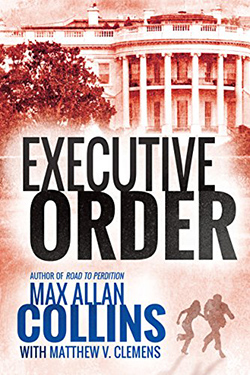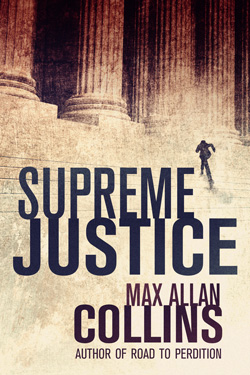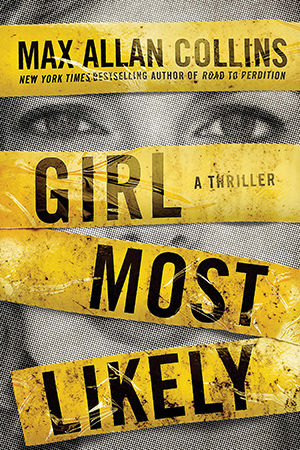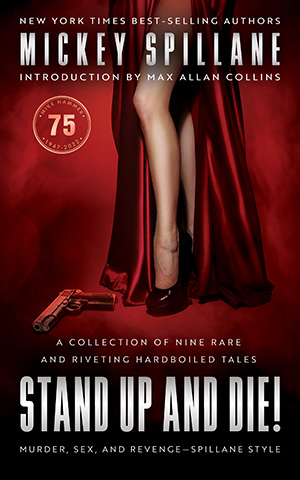We did not attend San Diego Comic Con this year. Maybe next. We tentatively plan to be at Bouchercon (Barb and I, and Matt Clemens too, unless Covid scares us off).
Check out this Wild Dog cosplay pic from an unknown recent convention.

A 12-year old girl at a comic con appears as Wild Dog!
Some new bargain offers for Kindle on several of my titles are about to hit.
Midnight Haul will be promoted via Kindle Daily Deal starting 8/6/2022 and running through 8/6/2022 – 0.99 USD during the promotion peril. Midnight Haul is a 1986 eco-thriller with a Mallory-esque protagonist.
Supreme Justice will be promoted via Mystery, Thriller & Suspense Kindle book deals starting 8/1/2022 and running through 8/31/2022. 1.99 USD during the promotion period. This is the first in the Reeder and Rogers political thriller trilogy.
Executive Order will be promoted via a $3 toward a selection of Kindle books starting 8/1/2022 and running through 8/31/2022. (I don’t quite know what this promotion is exactly, but maybe you do.) This is the third in the Reeder and Rogers political thriller trilogy.
The Reeder and Rogers books were just a little teensy weensy bit prescient. Supreme Justice (2014!) was about Roe V. Wade being overturned and somebody targeting Supreme Court justices for death to change the make-up of the court. Fate of the Union (2015!) was completely unbelievable – a megalomaniac billionaire runs a populist presidential campaign, breaking countless laws along the way (what will that Collins and Clemens think up next?). Finally Executive Order (2017!) finds the Secret Service participating in an attempted coup of the U.S. government (what, are Collins and Clemens kah-ray-zee?).
Longtime reader Joe Maniscalco has posted a Girl Most Likely review on both Goodreads and Amazon, but I’d like to share it with you here, as well. (By the way, as I write this both Girl Most Likely and Girl Can’t Help It are still offered at the 99-cents Kindle price on Amazon.)
I’ve been reading Collins’ novels since the early 1980s, beginning with protagonists, Quarry, and Heller. Tough guys all of them. Collins has even written Westerns and completed unfinished novels by Mickey Spillane. This may be his first (or at least the first for this reader), where the protagonist is female—a young Midwestern police chief who is working with her retired police officer father.
Girl Most Likely is a crime thriller that I chose to read on the plane to my own high school reunion. Could a serial killer be looking for victims who’ve attended a specific high school graduation class? And if so, why?
This appears to be one of Collins’ more traditional mystery novels with its closed circle of suspects, and an almost traditional detective team.
I selected this Max Allan Collins after recently reading his Road to Perdition trilogy and waiting for his next Heller historical mystery. I shouldn’t have waited so long. Collins seems to be exercising his writing chops with this different, but worthy addition to his resume.
Obviously I appreciate a nice review like this, but it does spark some thoughts I’d like to share.
I am well aware that not all readers are willing to try something different from a writer whose work they’ve liked in another vein. Joe is clearly an exception. Still, I do have a fair number of readers who, for example, like both Quarry (the most overtly noir) and the Antiques novels (the shamelessly if tongue-in-cheek cozy mysteries written with my wife Barb as “Barbara Allan”).
Joe viewing Krista Larson as my first female protagonist indicates he is not aware of the Antiques novels, with Brandy Bourne and her mother Vivian sharing lead honors, or of the Terry Beatty co-created comics feature Ms. Tree (not even in her one prose novel appearance, Deadly Beloved). He would probably like Ms. Tree and be open-minded enough to try the Antiques novels.
But, as I indicated, I understand not everyone can handle a writer doing different things. Barb, for example, writes very dark short stories and has for years; but the Antiques novels she and I write together are comic and fairly light. My long list of novels and stories are all over the place – the Mallory novels have been described as medium-boiled, Nolan is third-person crime, Quarry is first-person crime, the Eliot Ness quartet strictly police procedural, same with CSI obviously, the two Mommy novels psychological horror, Reeder & Rogers political thrillers, the Harrow novels with Matt Clemens are serial killer books…and so on.
For a lot of years – I am slowing down in my dotage – I published five, even six books a year. I did this because I had the temerity to want to try to make a living. This included movie novelizations and TV tie-ins, about which some discriminating readers might hold their nose in the air and squeeze those noses delicately shut with refined fingers and judiciously avoid. Back in the real world, I was making a living and getting on the New York Times and USA Today bestseller lists with a lot of those novels, the varied genres of which allowed me to stay fresh, learn new things, and work muscles I didn’t know I had.
No publisher would publish five new Quarry books in a year. Nobody wants more than one Mike Hammer novel a year. I can’t write more than one Heller every couple of years or so because of the degree of difficulty, starting with voluminous research. And, anyway, I need to stay fresh. Stale is bad.
This is something of an old argument, of course, and a moot point really, because at my age doing four or five or six novels in a year just isn’t going to happen. But just understand that I don’t expect you to like everything I write. I love it when you do, but that’s not a requirement. Still, if you like my work, in the unlikely event you find something of mine you don’t like, try to keep it to yourself.
Is that really asking too much?
Last week I wrote about Paul Newman, Joanne Woodward, Tom Sizemore, Chris Penn, Quentin Tarantino, Bill Lustig, Larry Cohen and (not surprisingly) Mickey Spillane. But in the comments and e-mails about that update, nobody talked to me about any of those famous humans.
Everybody talked about Toaster Collins.
My tribute to our late little family dog, a lovably demented Blue Heeler, touched a lot of heart strings. I wrote my blatantly sentimental piece knowing it was not exactly expected of a hardbitten dispenser of noir like me. But I did it anyway, and my son Nate – Toaster’s real master – provided some lovely pictures of the little dog, representing well this small life that impacted our family in such a big way.
Some of these comments were posted last week (and you can go read them), but others came by way of e-mails. I even heard from some of my editors. I found myself reflecting on this outpouring – these were condolences that might have been about my mom or dad passing. And I asked myself how these creatures, these pets that can be so loving and so demanding, who have us growling when we have to board them to get a few days away, who want to go outside at the least convenient moments, who beg for food and attention but always on their terms…who needs them?
Apparently a lot of us do.
When I reflect too on how terrible we are to each other, everything from losing friendships over partisan politics to yelling at stupid drivers, I marvel at how these non-human creatures touch our humanity in a way other humans seldom do.


Here’s yet another indication that the film of Road to Perdition is becoming an American classic.
And Perdition is ranked one of the best 30 movies playing on Paramount-Plus right now.
Finally, Scar of the Bat is included in this article about Batman appearing in different eras.
M.A.C.












